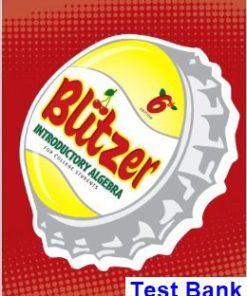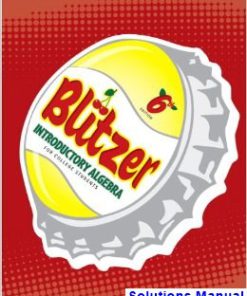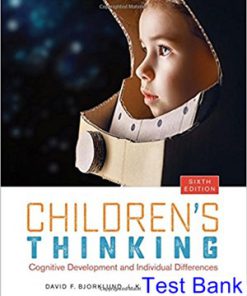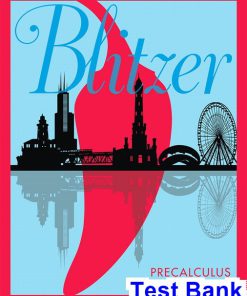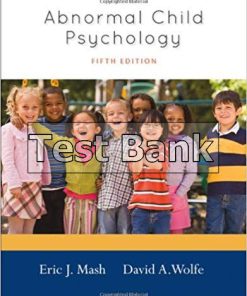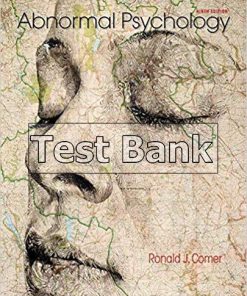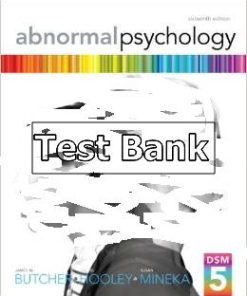Thinking Mathematically 6th Edition Blitzer Test Bank
You may also like
-
$26.50
$50.00 -
$26.50
$50.00
Instant download Thinking Mathematically 6th Edition Blitzer Test Bank pdf docx epub after payment.
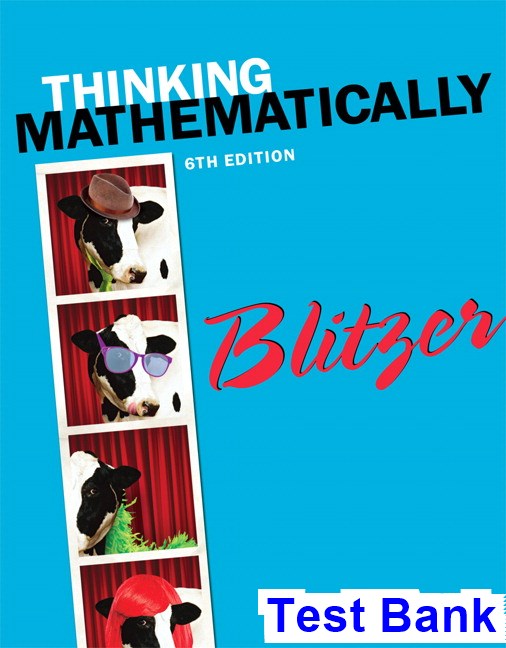
Product details:
- ISBN-10 : 0321867327
- ISBN-13 : 978-0321867322
- Author: Robert Blitzer
In Thinking Mathematically, Sixth Edition, Bob Blitzer’s distinctive and relatable voice motivates students from diverse backgrounds and majors, engaging them in the math through compelling, real-world applications. Understanding that most students in a liberal arts math course are not math majors, and are unlikely to take another math class, Blitzer has provided tools in every chapter to help them master the material with confidence, while also showing them the beauty and fun of math. The variety of topics and flexibility of sequence make this text appropriate for a one- or two-term course in liberal arts mathematics or general education mathematics.
Thinking Mathematically 6th Edition Blitzer Solutions Manual
Table of contents:
1. Problem Solving and Critical Thinking
1.1 Inductive and Deductive Reasoning
1.2 Estimation, Graphs, and Mathematical Models
1.3 Problem Solving
2. Set Theory
2.1 Basic Set Concepts
2.2 Subsets
2.3 Venn Diagrams and Set Operations
2.4 Set Operations and Venn Diagrams with Three Sets
2.5 Survey Problems
3. Logic
3.1 Statements, Negations, and Quantified Statements
3.2 Compound Statements and Connectives
3.3 Truth Tables for Negation, Conjunction, and Disjunction
3.4 Truth Tables for the Conditional and the Biconditional
3.5 Equivalent Statements and Variations of Conditional Statements
3.6 Negations of Conditional Statements and De Morgan’s Laws
3.7 Arguments and Truth Tables
3.8 Arguments and Euler Diagrams
4. Number Representation and Calculation
4.1 Our Hindu-Arabic System and Early Positional Systems
4.2 Number Bases in Positional Systems
4.3 Computation in Positional Systems
4.4 Looking Back at Early Numeration Systems
5. Number Theory and the Real Number System
5.1 Number Theory: Prime and Composite Numbers
5.2 The Integers; Order of Operations
5.3 The Rational Numbers
5.4 The Irrational Numbers
5.5 Real Numbers and Their Properties; Clock Addition
5.6 Exponents and Scientific Notation
5.7 Arithmetic and Geometric Sequences
6. Algebra: Equations and Inequalities
6.1 Algebraic Expressions and Formulas
6.2 Linear Equations in One Variable and Proportions
6.3 Applications of Linear Equations
6.4 Linear Inequalities in One Variable
6.5 Quadratic Equations
7. Algebra: Graphs, Functions, and Linear Systems
7.1 Graphing and Functions
7.2 Linear Functions and Their Graphs
7.3 Systems of Linear Equations in Two Variables
7.4 Linear Inequalities in Two Variables
7.5 Linear Programming
7.6 Modeling Data: Exponential, Logarithmic, and Quadratic Functions
8. Personal Finance
8.1 Percent, Sales Tax, and Discounts
8.2 Income Tax
8.3 Simple Interest
8.4 Compound Interest
8.5 Annuities, Methods of Saving, and Investments
8.6 Cars
8.7 The Cost of Home Ownership
8.8 Credit Cards
9. Measurement
9.1 Measuring Length; The Metric System
9.2 Measuring Area and Volume
9.3 Measuring Weight and Temperature
10. Geometry
10.1 Points, Lines, Planes, and Angles
10.2 Triangles
10.3 Polygons, Perimeter, and Tessellations
10.4 Area and Circumference
10.5 Volume and Surface Area
10.6 Right Triangle Trigonometry
10.7 Beyond Euclidean Geometry
11. Counting Methods and Probability Theory
11.1 The Fundamental Counting Principle
11.2 Permutations
11.3 Combinations
11.4 Fundamentals of Probability
11.5 Probability with the Fundamental Counting Principle, Permutations, and Combinations
11.6 Events Involving Not and Or; Odds
11.7 Events Involving And; Conditional Probability
11.8 Expected Value
12. Statistics
12.1 Sampling, Frequency Distributions, and Graphs
12.2 Measures of Central Tendency
12.3 Measures of Dispersion
12.4 The Normal Distribution
12.5 Problem Solving with the Normal Distribution
12.6 Scatter Plots, Correlation, and Regression Lines
13. Voting and Apportionment
13.1 Voting Methods
13.2 Flaws of Voting Methods
13.3 Apportionment Methods
13.4 Flaws of Apportionment Methods
14. Graph Theory
14.1 Graphs, Paths, and Circuits
14.2 Euler Paths and Euler Circuits
14.3 Hamilton Paths and Hamilton Circuits
14.4 Trees
People also search:
thinking math activities
thinking about math meme
thinking and working mathematically cambridge
ways of thinking and working mathematically
communicating mathematically and metacognitive thinking
what is thinking mathematically
how to think more mathematically

